Indian tribal tattoos have captivated the imagination of art enthusiasts and cultural historians alike for centuries, leaving a vibrant trail of stories inked into the skin. Deeply rooted in ancient traditions, these tattoos articulate a tapestry of cultural narratives that resonate far beyond mere body art. They serve as a powerful form of expression, linking modern wearers to generations of heritage and personal identity. The world of Indian tribal tattoos is rich with history and layered symbolism. Every line and curve is a reminder of an ancestral past that celebrated nature, spirituality, and the eternal cycle of life. As you explore these tattoos, you quickly discover that they are not just designs etched on skin, but bold declarations of identity and community values. Bold cultural ink bridges the gap between the past and the present, offering a visual language that transcends words. Artists and historians acknowledge that every traditional tattoo carries a story of survival, adaptation, and transformation. In this exploration, we delve deep into the origins of Indian tribal ink, understanding its evolution, respecting its cultural significance, and considering its modern adaptations. This journey into the art of Indian tribal tattoos reflects a harmonious blend of history, spirituality, and personal expression that invites you to view skin art through a richer, more meaningful lens.
Origins of Indian Tribal Tattoos
The origins of Indian tribal tattoos stretch back millennia, illustrating a fascinating interplay between art and the spiritual world. These tattoos have been passed down through generations, surviving the sweeping tides of history while maintaining their sacred purpose. Historically, these indelible marks were not simply decorative; they embodied the rites of passage, social status, and mystical protection. I find it intriguing how each design is a repository of ancestral knowledge, connecting the individual wearer with the collective spirit of their community. Traditional techniques and natural dyes were used to create these markings, which symbolized various elements such as fertility, strength, and protection from evil spirits. In many indigenous communities, the tattooing process was a ceremonial act, imbued with rituals that spoke to the cycles of the natural world. Each puncture of the needle was laden with meaning, signifying challenges overcome, milestones reached, or blessings invoked. The raw, tactile nature of these tattoos speaks to a time when art and life were inseparable. Today, these ancient symbols remain a testament to the resilience and creativity of indigenous cultures, continually inspiring those who seek to express their own identity through the beauty of lived tradition. By understanding their origins, we come to appreciate the deep bond between the art of tattooing and the history of indigenous peoples, a bond that continues to inspire bold cultural ink designs worldwide.
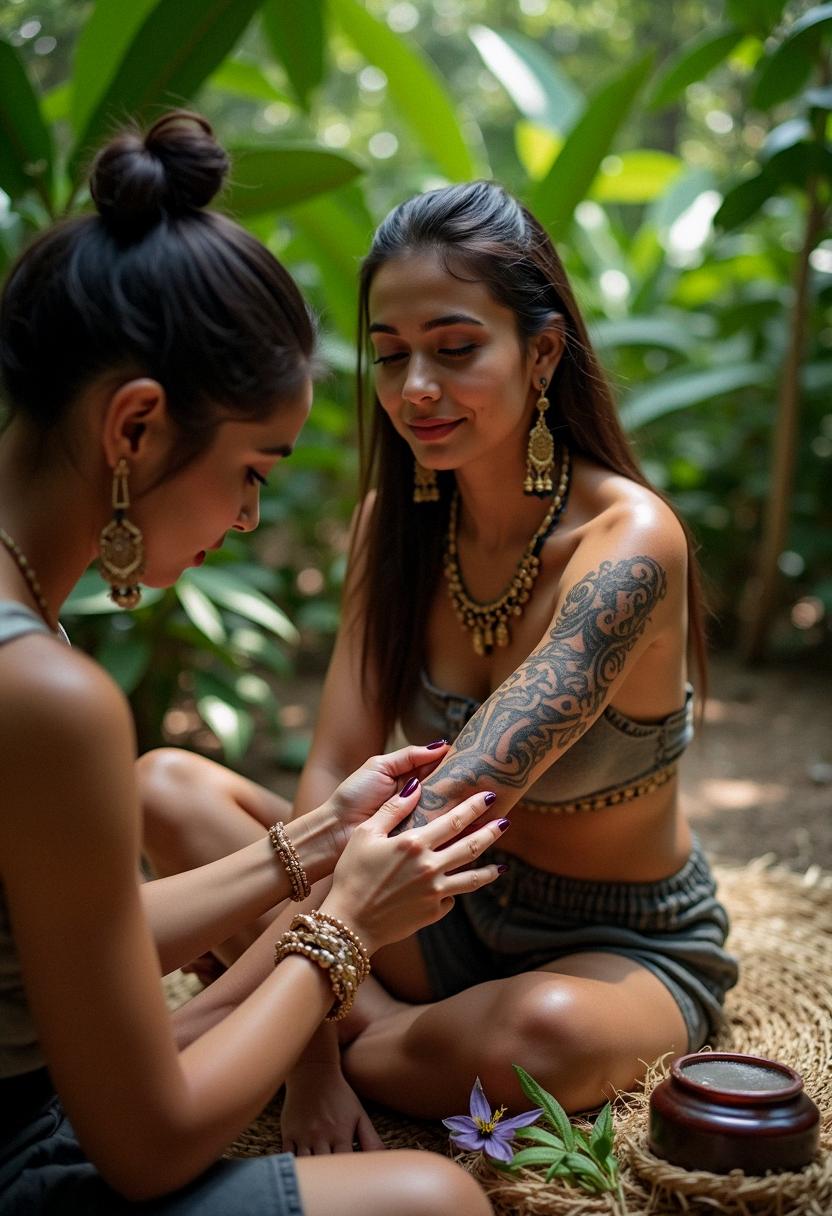
Cultural Significance and Symbolism behind Design Elements
Exploring the cultural significance behind Indian tribal tattoos reveals a world where art intertwines with personal and communal narratives. Every line and design element carries profound meaning, often representing spiritual beliefs, natural forces, and collective memories passed down from one generation to the next. I always get fascinated by how these tattoos function as more than just aesthetic embellishments—they are badges of honor, signifying personal milestones, family lineage, or magical elements intended to ward off misfortune. Resources from cultural historians suggest that each symbol in these tattoos might represent elements like water for life, fire for transformation, or earth for grounding. Their design is as subtle as a whisper yet as bold as thunder. Enjoying these tattoos means embracing the fusion of form and spirit; while the intricate patterns offer visual delight, the symbolism they encompass transmits a lifetime of wisdom and traditions. Many in the Indian tribal context see their tattoos as living reminders of their ancestors’ bravery and the enduring human spirit. Ultimately, the cultural and spiritual significance of these tattoos has evolved to meet the needs of a modern audience, transcending its origins while remaining deeply rooted in the timeless human quest for meaning and identity.
Traditional Patterns, Motifs, and Iconography
Traditional patterns, motifs, and iconography in Indian tribal tattoos are vibrant narratives etched into skin, each design element telling a unique story that echoes the values and beliefs of ancient cultures. When you take a closer look at these intricate designs, you can observe how natural elements like animals, plants, and celestial bodies often combine with abstract geometrical forms, creating a symbolic language understood by those within the community. I genuinely appreciate how these motifs aren’t arbitrary; they are powerfully charged symbols that have been meticulously refined over generations. For example, recurring motifs such as arrows or spirals might signal protection, transformation, or the never-ending flow of life. These designs are not only visually striking but also serve as a constant reminder of the wearer’s bond with nature and tradition. In many cases, the complexity of the patterns underscores a balanced interplay between chaos and order, guiding individuals through the unpredictable journey of life. Artists often incorporate delicate details that require not only immense skill but also a deep understanding of the cultural fabric they represent. Each tattoo is then much more than skin deep; it is a historical document, a living piece of art that speaks volumes about identity, survival, and the cultural legacy of indigenous people. The continuity of these motifs reinforces the timeless nature of artistic expression and the deep-seated human connection to the spirit of tradition.
Techniques, Tools, and Authentic Practices
Delving into the techniques, tools, and authentic practices of Indian tribal tattoos, you discover a world where tradition meets craftsmanship in the most tactile way. These ancient practices were honed over centuries, involving handcrafted tools made from natural materials that have withstood the test of time. I’ve always been drawn to the raw authenticity in traditional tattooing, where every needle prick carries both precision and cultural heritage. In many indigenous communities, tattooing was a rite of passage, where the process itself was as important as the final design, deeply intertwined with spiritual rituals. Artisans used sharpened sticks or bone tools, combined with organic pigments derived from natural sources like charcoal or plant extracts, to achieve designs that were both beautiful and enduring. The entire practice was enveloped in a sense of ceremony, with each step of the process, from the preparation of the skin to the final inking, holding significant communal and spiritual relevance. What truly sets these methods apart is not just the art itself, but the intention behind every meticulous application of ink. Even today, modern practitioners strive to emulate these ancestral methods, ensuring that the soul of tradition is carried forward in every brushstroke and needle mark. This dedication to authenticity is what makes Indian tribal tattoos so uniquely compelling, as they continue to bridge the gap between a storied past and contemporary expression.
Modern Adaptations and Global Influences
Modern adaptations of Indian tribal tattoos have beautifully merged timeless traditions with contemporary aesthetics, creating a dynamic blend that speaks to a global audience. In today’s world, the brave cultural ink of these tattoos transcends borders, inspiring movements that value heritage and individuality alike. It’s fascinating to witness how artists incorporate traditional motifs with modern design elements to create tattoos that resonate with today’s lifestyles. Contemporary tattooists often use advanced techniques — be they digital stencils or precise laser-guided tools — yet the soul of Indian tribal iconography remains unmistakably vibrant. I see so many artists passionately pushing boundaries by reinterpreting classic designs to reflect current social, political, or personal narratives. This fusion of eras creates a dialogue between the past and present, reflecting a culture that honors its roots while embracing forward-thinking creativity. Global influences have not diluted the essence of these tattoos; rather, they have provided a wider canvas upon which ancient symbols are reimagined. People from diverse backgrounds now see the beauty and significance in tribal patterns, incorporating them into their self-expression in ways that resonate on a deeply personal level. Whether you’re drawn to the historical allure or the modern twist, these tattoos continue to evolve as living art, bridging generational gaps and cultural divides with every bold line inked on skin.
Personal Expression and Contemporary Interpretations
When exploring the realm of Indian tribal tattoos in the context of personal expression, you immediately notice how every line and curve becomes a narrative of one’s life story, intertwined with deep cultural roots. Many individuals are drawn to these traditional designs not only for their aesthetic beauty but also for the powerful symbolism that allows them to articulate personal beliefs and experiences uniquely. I can tell you that wearing such a tattoo often feels like carrying a piece of history along with personal identity — a constant reminder of resilience, heritage, and the journey one undertakes in life. Contemporary interpretations of these tattoos often incorporate fresh elements, reimagining age-old designs to express modern values alongside traditional symbolism. This dynamic melding of old and new signifies a form of art that adapts to the wearer’s evolving narrative while remaining rooted in culturally rich traditions. You might find that an element of an ancient line transforms into a modern symbol of hope or rebellion, reflecting your unique experiences and personal journey. There’s a captivating dialogue between the time-honored techniques and the innovative infusion of modern artistry, resulting in tattoos that are as much about self-expression as they are about cultural preservation. By choosing a design that resonates with your deeper self, you’re not only adorning your skin with art but also embracing ancestral wisdom in a way that feels both human and profoundly personal.
Choosing a Skilled Artist and Studio for Authenticity
Choosing a skilled artist and reputable studio when considering Indian tribal tattoos is absolutely crucial if you truly value the authenticity and craft behind these bold cultural expressions. Personal recommendations and thorough research are like treasure maps leading you to an artist who understands not only the technical finesse but also the deep cultural significance behind each design. I’ve found that a great artist won’t just ink your skin; they’ll take the time to delve into your story and help you choose a design that resonates deeply with your personal journey. The studio environment matters as much as the art itself—clean, respectful, and steeped in a tradition of excellence. Artists well-versed in tribal tattoos carry an understanding of the traditional practices, ensuring the designs respect the heritage and rituals of their origins. This authenticity brings not only a profound sense of personal empowerment but also assures that the tattoo will age gracefully and remain a meaningful piece of cultural art. Look for portfolios that demonstrate a seamless blend of ancient motifs and modern aesthetics. It’s essential to have an open conversation about your vision, ask for ideas, and ensure they share genuine respect for the art form. Trust your instincts—when you walk into a studio feeling confident and understanding that your tattoo will be handled with care, you’re already on the right track to owning a piece of art that is as authentic in execution as it is in significance.
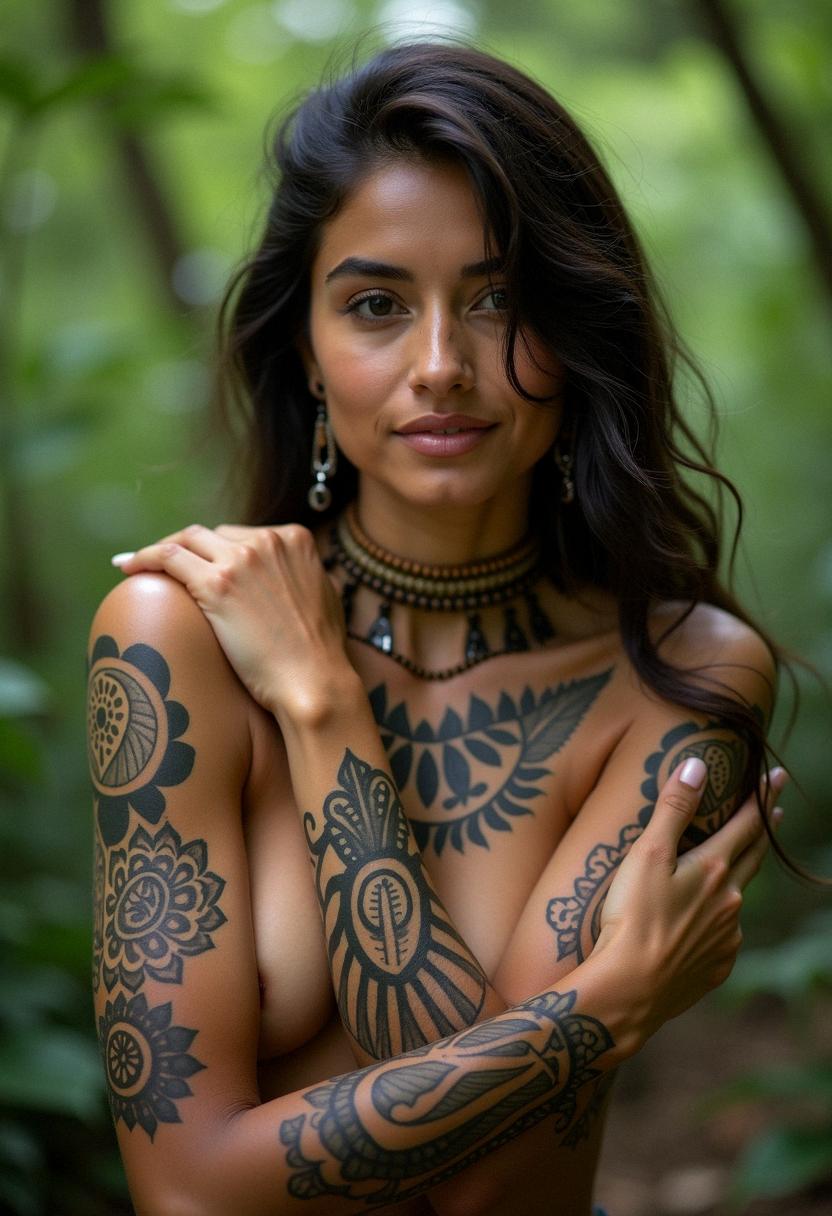
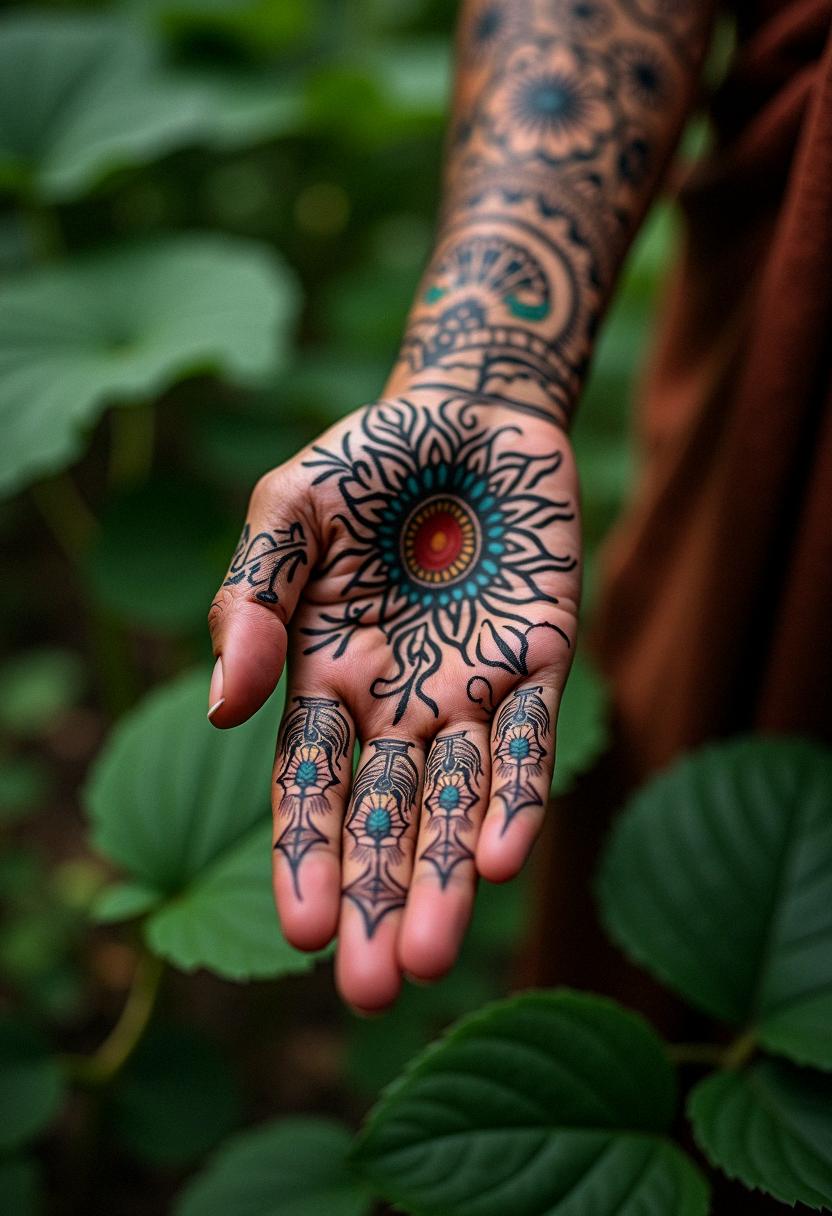
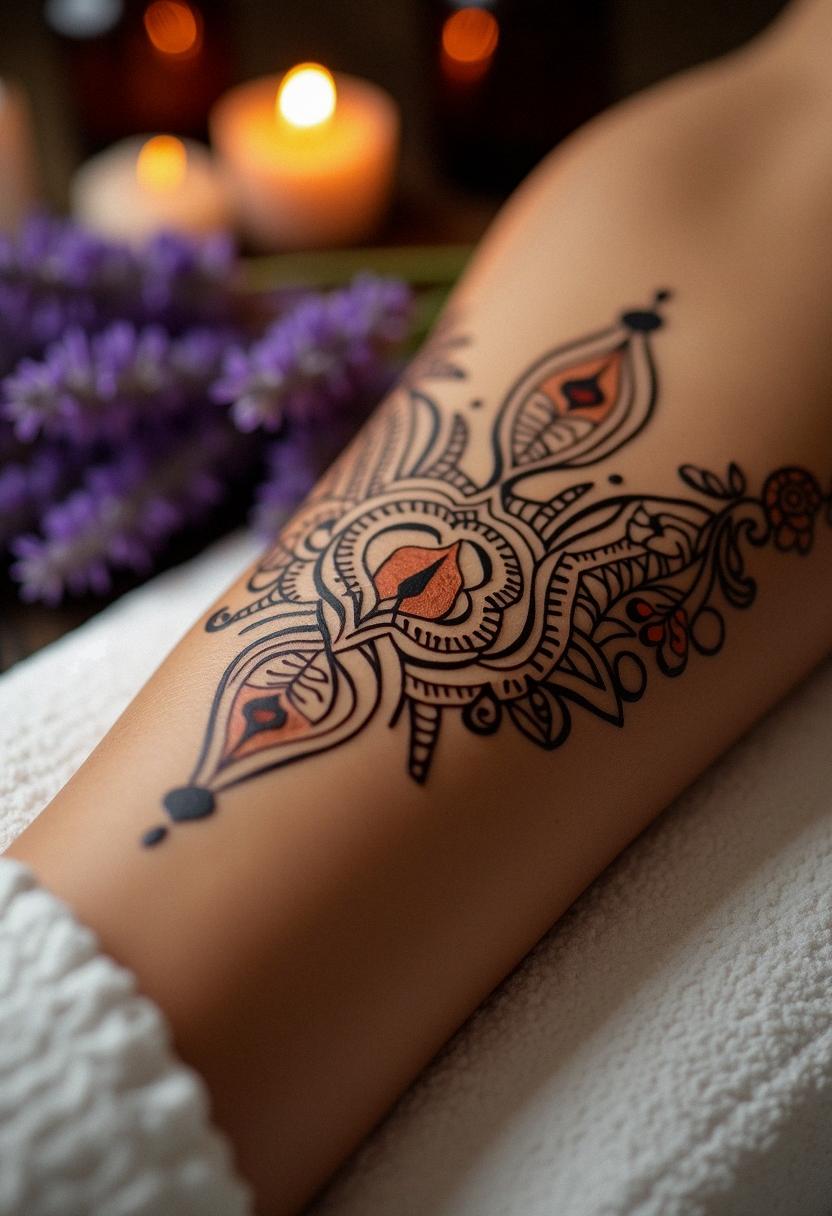
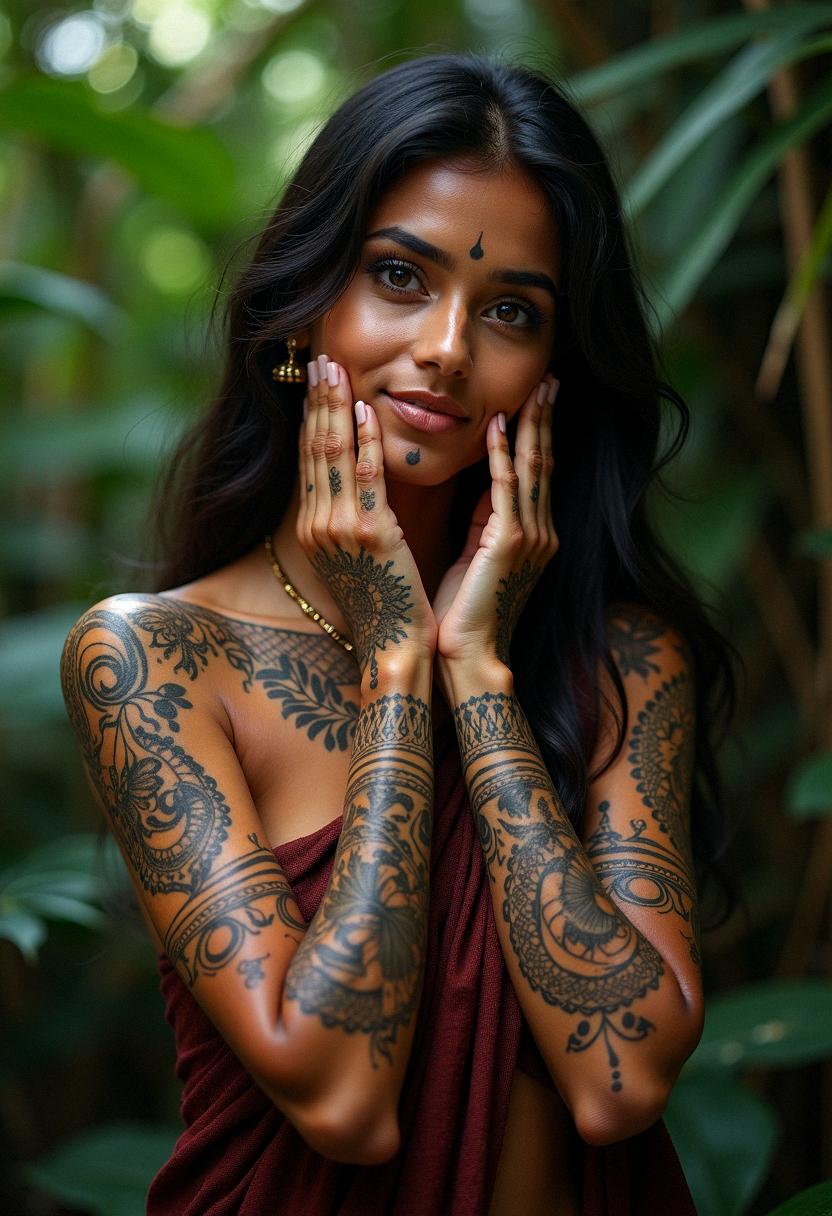
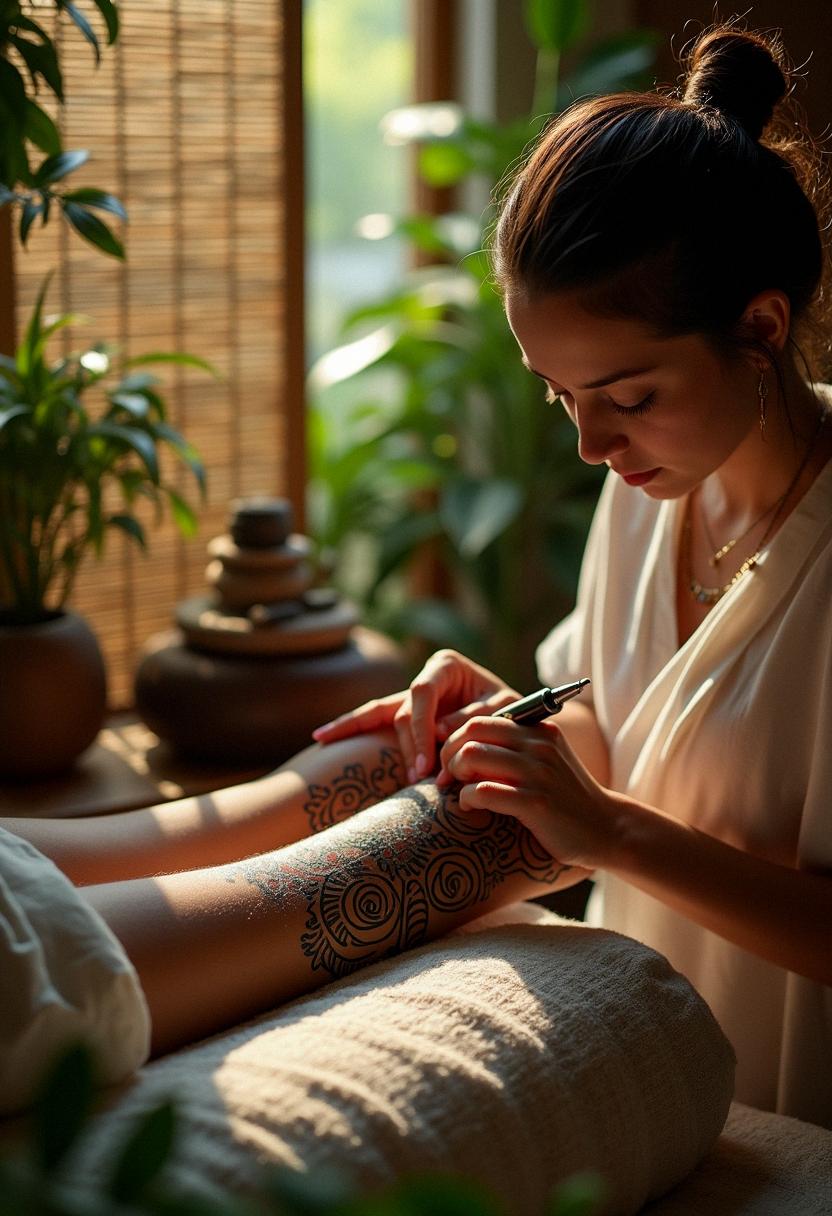
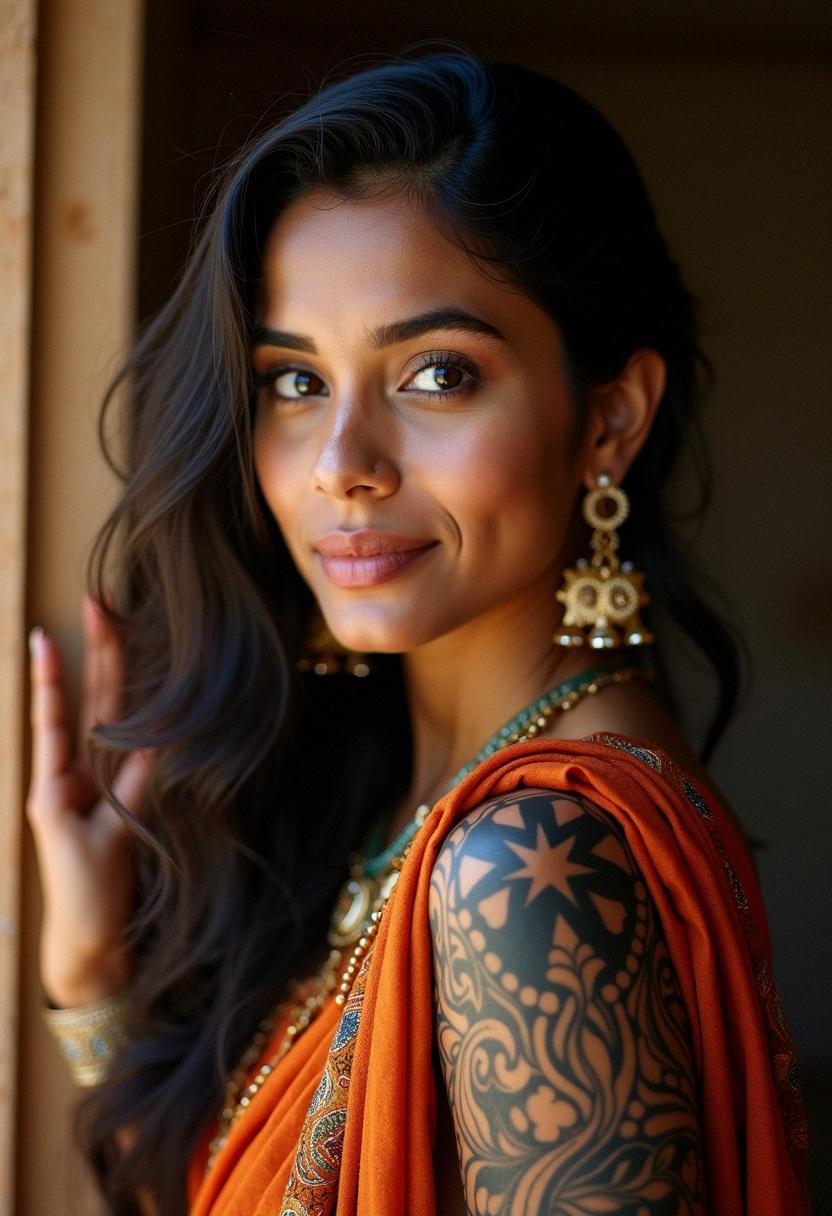
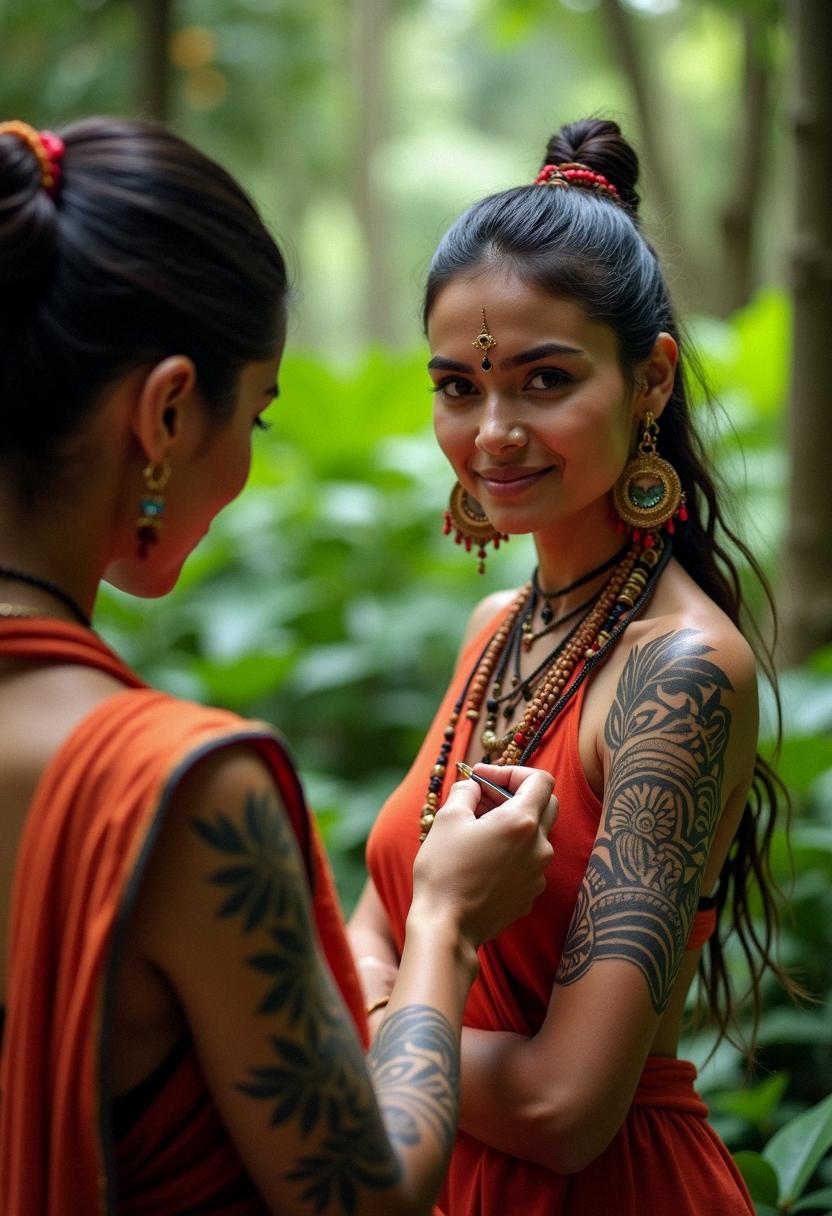
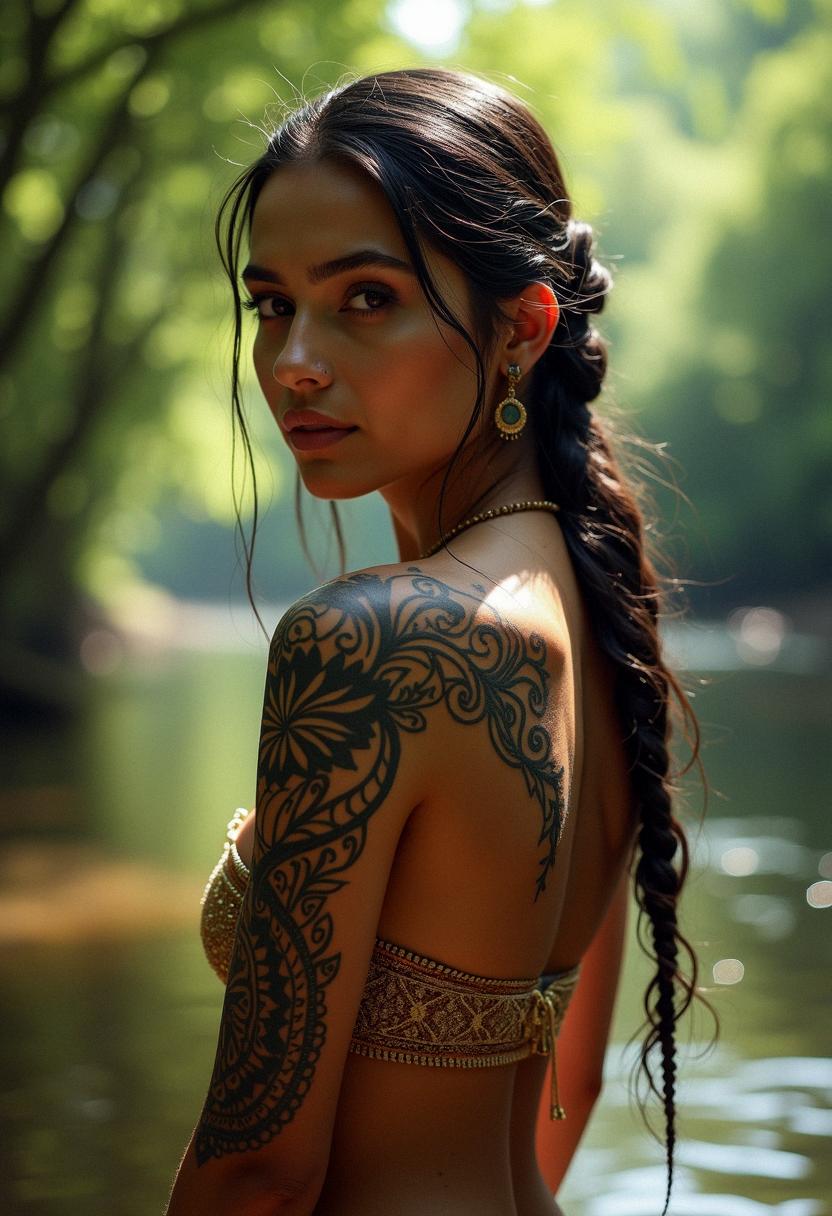
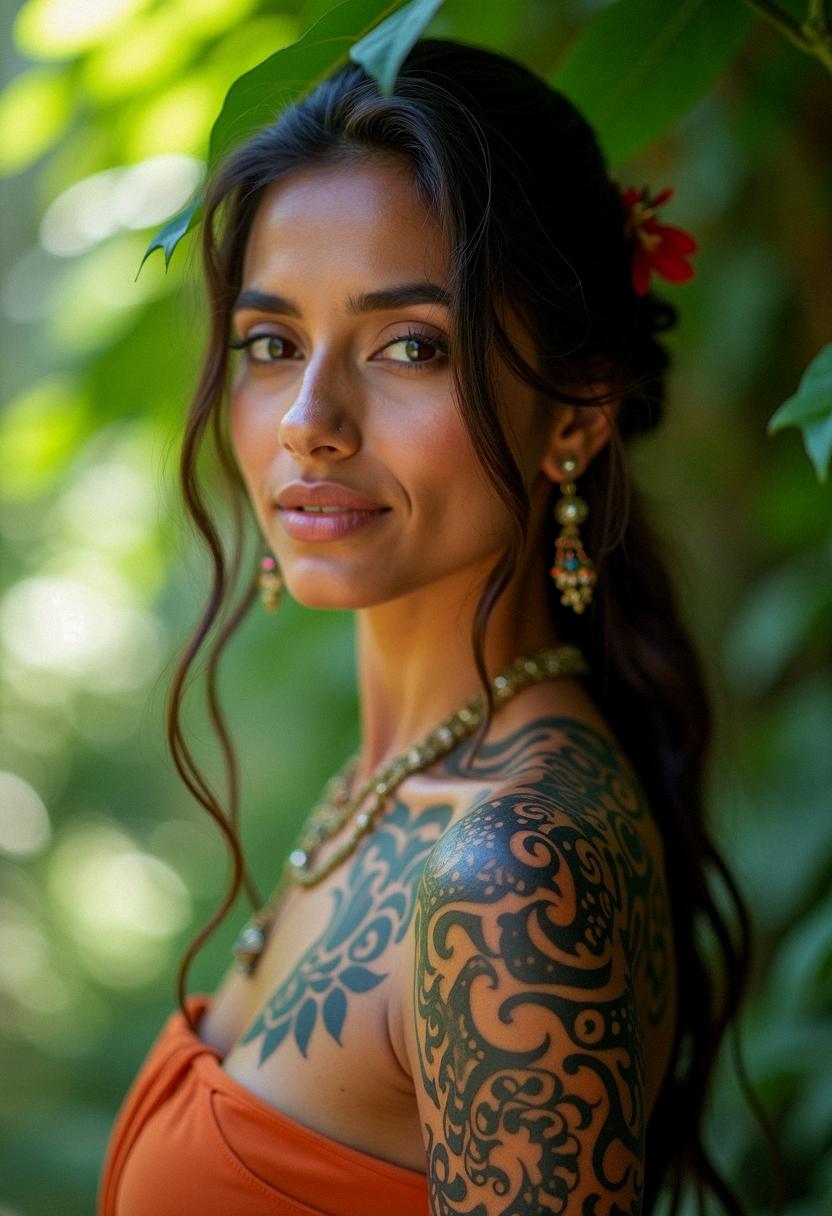
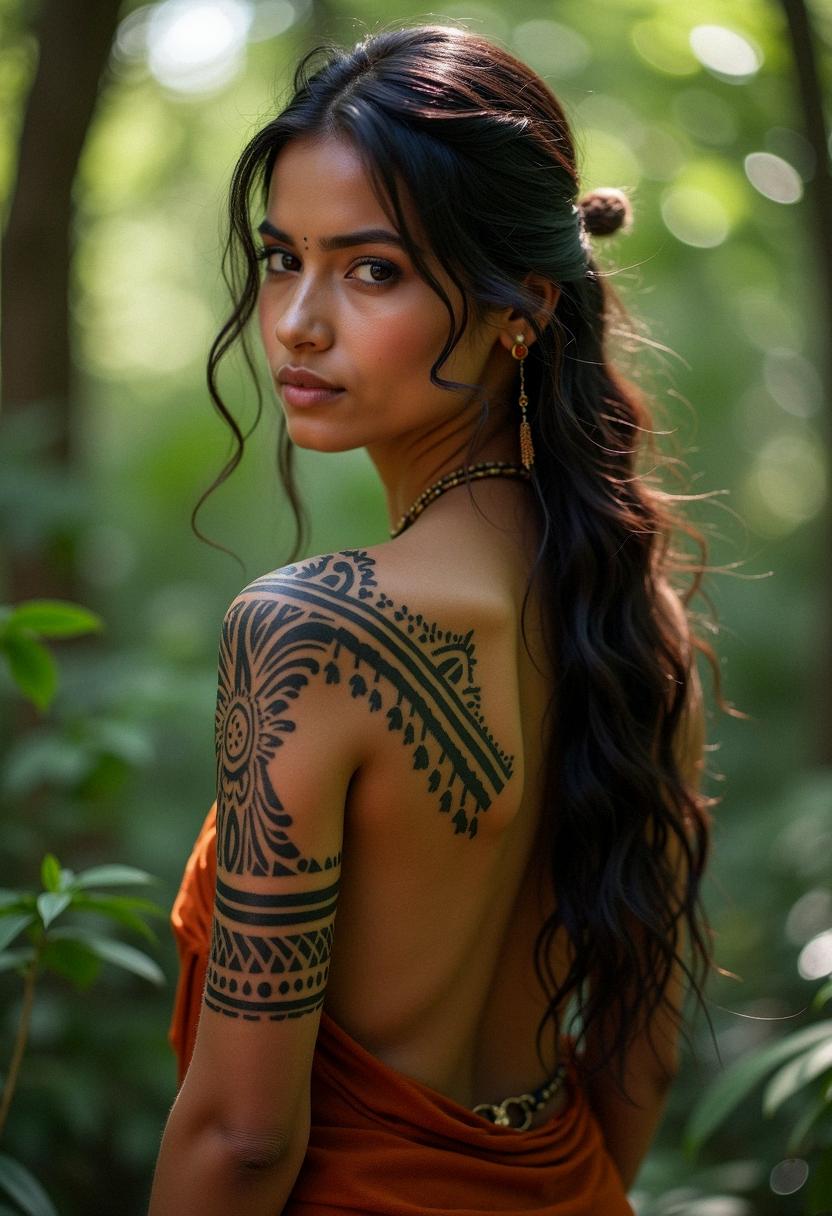
Aftercare, Healing, and Long-Term Maintenance
After getting an Indian tribal tattoo, paying meticulous attention to aftercare, healing, and long-term maintenance is as important as the design itself. In my experience, the journey doesn’t end once the ink dries on your skin; it’s only just beginning a process of preservation that honors the intricate work of the artist. Proper aftercare techniques include ensuring your skin is kept clean, moisturized, and protected from the harsh effects of sun exposure. This nurturing phase is critical because the tattoo represents not just art, but an ongoing dialogue with your personal heritage. I always stress that consistent care helps maintain the vibrancy and clarity of the tattoo, ensuring each line and shade tells your story vividly for years to come. Traditional healing practices, sometimes inspired by the same ancient methods used during the tattooing process, can also infuse a sense of ritual into the aftercare routine. Whether it’s following a recommended cleaning regimen or using natural balms and moisturizers prescribed by the artist, each step is designed to protect and prolong the beauty of the design. Incorporating these practices into your daily care routine serves as a respectful homage to the art form, ensuring that your tattoo remains a lasting emblem of bold cultural ink that continues to speak to your soul. Over time, routine touch-ups might be needed, and maintaining regular check-ins with your artist can help in preserving the intricate details of these historic designs.
